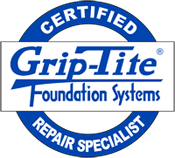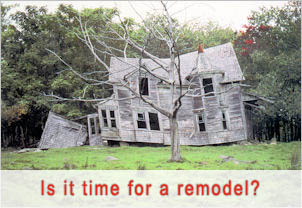
Before your foundation gets the green light, inspectors will assess key elements that impact safety and structural integrity. They’ll check for cracks, water damage, proper thickness, and whether the foundation aligns with approved plans. Rebar placement, drainage, soil stability, and signs of shifting or settling all come under scrutiny. These inspections are critical to ensuring your build is up to code and built to last. In the sections below, we’ll break down what matters most, so you know exactly what to expect and how to prepare.
Key Takeaways
- Here’s what you should anticipate Bay Area building inspectors to look for in your concrete foundation.
- Keep your eye out for local quirks like expansive soils and seismic hazards, and ensure your foundation meets all pertinent codes.
- Take your inspection report seriously and learn what separates minor foundation issues from major ones, and do what you can to stop the small problems before they get serious.
- Hire experts who harness sophisticated equipment for precision readings and who trust their seasoned intuition for spotting unseen or impending threats.
- Get proactive — plan repairs, call in the experts when necessary, and follow up with regular inspections to safeguard your property investment.
- Stay ahead of foundation issues with your knowledge of local regulations.
The Inspector’s Foundation Checklist
A foundation inspection isn’t merely a walk-through; it’s a detailed evaluation that seeks signs of trouble early. You want to know if your building is on solid footing. Licensed civil engineers use a predefined checklist, meticulously recording specifics such as site information, date, weather, and personnel on-site. They check plans, specs, and even how subdrains or waterproofing are arranged. Observations about foundation behavior, including any visible cracks or structural issues, are documented in the inspection report. Inspections typically run $300 to $800, a bargain to save you from future repair horror stories. Most professionals recommend inspecting your foundation every 3-6 months or at least annually, regardless of your geographic location.
1. Cracks And Fractures
Visible cracks say a lot about your foundation’s condition. Hairline cracks are typical, but wider cracks or those following sharp angles can indicate movement.
Inspectors classify cracks by width and location. A shallow crack close to a window is not the same as a deep one that extends along the wall or floor. Cracks that are more than 2 mm wide or have uneven edges are more concerning. If there’s settling — like a dip in the floor or walls pulling away — that’s a sign to look deeper.
Abnormal settling indicates that the foundation may no longer be supporting the structure as it was intended. If it’s not controlled, it can proliferate to the balance of your structure.
If cracks appear significant, the inspector notes it on the checklist and possibly recommends repairs—such as sealing or even structural—to maintain safety.
2. Water And Moisture
Moisture is among the leading causes of foundation failure. Water can sneak in from bad drainage, leaks, or rising damp. It deteriorates the concrete.
Inspectors check for areas of standing water, wet spots, or evidence of water stains. They inspect gutters, downspouts, and grading to ensure water drains away from your structure. Mold or mildew, by definition, water’s been there a while and can do more than stink.
You’ll get tips to repair drains or install dehumidifiers. Sometimes, a vapor barrier or better landscaping is sufficient.
3. Foundation Levelness
Inspectors utilize leveling tools to test for any sloping or uneven floors. Even marginal climbs—more than 10 mm over a short run—can spell disaster. They span rooms, doors, and hallways to identify dips or bulges.
If the floor isn’t flat, you may have a settling issue or worse — a structural fault. Other times it’s simply urgent, other times it’s a quick patch. They suggested everything from simple patching to complete foundation leveling.
4. Concrete Quality
Concrete has its narrative. They inspect for indications such as chipping (spalling) or flaking (scaling), which are indicative of weather damage or an inferior mix. Good concrete is dense and doesn’t have big air pockets. The correct thickness—generally a minimum of 150 mm for the majority of buildings—and the appropriate mix make your structure stand up and stand the test of time.
If the concrete is thin, weak, or crumbling, repairs might entail patching, sealing, or even having new sections poured.
5. Seismic Hardware
Earthquake safety is important everywhere, not only in high-risk areas. Inspectors verify that seismic hardware—such as anchors, bolts, and brace systemsise present and properly installed. Loose or missing hardware compromises your building’s safety.
If upgrades are required, you might find yourself needing new anchors or retrofits to comply with local regulations.
Bay Area’s Unique Challenges
In the Bay Area, homes face unique challenges due to soil and seismic issues, making a licensed civil engineer’s role crucial for foundation inspections. Local codes and inspection standards reflect these hazards, prompting inspectors to evaluate foundation problems that could jeopardize your residence or lead to costly repairs.
Soil Type | Impact on Foundation | Local Code Focus |
Clay (expansive) | Movement, cracking | Soil stability, drainage |
Silt/Sand (loose) | Shifting, uneven settling | Compaction, reinforcement |
Hillside soils | Slope instability | Slope grading, anchors |
Soil Conditions
Soil in that area is no joke. It’s largely clay, which expands with moisture and contracts when dry, stressing the heck out of your foundation. Here in locations such as Walnut Creek, those expansive soils routinely crack slabs and move piers, so inspectors search for evidence of prior movement.
Inspectors inspect drainage. Clay-rich soil, which retains water, is slow to drain. If water pools near your home, the soil can become loose, and your foundation may settle or heave. You’ll encounter silt and sand by the bay’s shore. These unconsolidated soils move during earthquakes or intense rains, so inspectors look for uneven settling. If the soil appears too soft or loose, they might recommend stabilization before any big repairs.
Seismic Demands
Earthquake risk is significant in the San Francisco Bay Area, where the earth rattles frequently. Licensed civil engineers and inspectors inquire whether your home is retrofitted or anchored to its foundation. They conduct a thorough foundation inspection to check for cracks, gaps, or misaligned frames that can indicate earthquake damage.
For foundations constructed prior to stringent seismic codes, foundation inspectors might recommend additional steel reinforcements or anchor bolts. When an earthquake shakes the Bay Area, a proper seismic retrofit helps your home stay secure. Skipping this can lead to larger damage and increased repair costs after a significant quake.
There’s a compelling reason for the strong seismic codes in California. They mandate updates and frequent evaluations. Some houses require an entire seismic retrofit, while others may only need bolts or braces.
Local Codes And Consequences
Local codes govern soils, drainage, and seismic security, making a thorough foundation inspection report essential for homeowners. Compliance isn’t just something to breeze by during inspection; it protects your investment and ensures the integrity of your home against potential foundation problems.
The Inspection Process
A licensed civil engineer conducts a thorough foundation inspection report, focusing on the security, stability, and durability of the structure. This systematic approach involves a defined checklist, ensuring that potential foundation problems, such as visible cracks and structural movement, are carefully evaluated.
- Visual walk-through of the entire foundation and structure.
- Specialized tools for moisture, level, and soil checks.
- Review of cracks, gaps, water stains, and surface changes.
- Documentation with photos and detailed notes.
- Phased inspections: before pouring concrete, before drywall, and just before final handover.
- Report writing tailored to each property, in clear language.
- Inspection of associated structural components, like floor and wall framing, vapor barriers, and grounds.
Visual Examination
Inspectors begin by conducting a standard foundation inspection to thoroughly review the entire foundation. They look for visible cracks, chipping, or unusual shifts in the surface, which can indicate more serious foundation problems such as settling or water damage. Primary indicators like white powdery stains (known as efflorescence) can reveal moisture leaks. Odd gaps between walls and floors, or sloping floors, are also carefully inspected.
Photos are taken to support the inspector’s observations, documenting what was found and where. Each area that may require necessary repairs or a detailed evaluation is tagged and described in the home inspection report, allowing homeowners to prioritize immediate efforts and ongoing monitoring.
Specialized Tools
Inspectors employ laser levels to determine whether the foundation is flat or has sunk in spots. It provides an immediate, accurate measurement that stands up to mere glancing. Moisture meters assist in verifying if water is infiltrating the concrete. Wet spots within the slab can deteriorate.
Our thermal cameras detect invisible moisture or leaks. They use soil probes and testing kits to discover more about what the foundation rests upon, as this is a significant risk with ground movement in many areas. All these tools have to work perfectly—inspectors examine and tune them for every job. This keeps results real and relevant for you.
Inspection Reporting
Upon inspection, the inspector files a report. They employ a software or list to ensure nothing slips by. Each report is specific to the house. We use simple language, backed by powerful images, so you’re in the loop.
It includes a comprehensive report of everything they uncovered, what they fixed, and recommendations moving forward.
Phased Inspections
It is a three-stage procedure. First, pre-concrete. Second, post-framing and pre-walls-closed-up. Third, pre-move in.
This staged schedule helps identify issues in their infancy and keeps the full construction on pace.

Interpreting The Findings
Knowing what licensed civil engineers seek in a concrete foundation allows you to estimate the severity of potential foundation problems and make educated decisions. Understanding the distinction between minor and major issues, key terminology, and next-step planning can save your home as well as your budget.
Minor VS. Major
- Minor issues: small hairline cracks (less than 2 mm), slight unevenness in the floor, minor chipping, or light water stains.
- Major issues: wide or horizontal cracks, clear sinking or heaving, doors or windows that won’t close, visible shifting, or deep water intrusion.
Even small cracks in the slab could indicate that settling has begun, which is a primary indicator of potential foundation problems. If ignored, these can escalate into more severe issues requiring a structural repair plan or even safety concerns. Water is typically the culprit behind both minor and major foundation issues, as it can accelerate settling or propagate cracks. Uneven settling — where one side of your foundation sinks much faster — is a classic warning sign. Observing for new cracks or shifts following a heavy rain can help detect issues early. For minor problems, mark their dimensions and outline with a pen and monitor every couple of months. Taking pictures and maintaining a log helps identify trends before they become overwhelming.
Common Terminology
- Settlement: When the foundation sinks due to soil movement or loss of support.
- Heaving: The upward swelling of the foundation is often caused by expanding soil or freezing.
- Structural integrity: The ability of your foundation to carry loads without failing.
- Horizontal cracks: Cracks running parallel to the ground, often serious and needing quick action.
Inspection reports, including a foundation inspection report, provide essential insights on whether you need quick repairs or regular upkeep. A user-friendly glossary in your home inspection report helps you track findings from the licensed civil engineer, even if you’re not a construction guru.
Next Steps
- Schedule repairs for major issues right away.
- Call in a licensed civil engineer if you discover large cracks or shifting.
- Set up routine maintenance if only minor flaws appear.
- Book follow-up inspections every 2–3 years to stay ahead.
It can cost a few hundred dollars to more than $10,000 for necessary repairs related to foundation problems, so being proactive and informed saves money and stress.
Beyond The Building Code
In other words, the building code is just the beginning. A solid concrete foundation shouldn’t just pass a standard foundation inspection; it should provide peace of mind for years to come. Licensed civil engineers understand that numerous hazards—wounds, damage, even fatalities—can arise from issues that codes overlook. Their profession forces them to identify defects, direct you beyond the minimums, and forestall latent issues from becoming actual hazards. They look at the bigger picture: safety, health, long-term use, and even how the foundation could affect the wider community.
A Pro’s Intuition
Experienced inspectors notice what others overlook. They can tell the difference between harmless cracks and those that can cause water leaks or worse. Their experienced eye detects micro-movements, moisture, or settlement patterns indicative of larger issues. It’s more than just ticking boxes. Sometimes, a musty scent or subtle wallmark speaks volumes.
Experience matters most in the trenches. Things that are partially hidden, such as rebar corrosion or soil swelling beneath the slab. A pro’s instinct, refined over a decade or two, pushes them to dig deeper. They inquire further, inspect deeper, and caution you where it counts.
If you care about your home’s safety, trust the pros. Their expertise can make all the difference between a band-aid and an expensive tear-out. There’s no shortage of tales in which an inspector’s hunch spotted a stealth hazard just in the nick of time. Those minutes save dollars,,s but more importantly, they save lives.
Future-Proofing
Strategy | Benefit |
Drainage planning | Stops water damage, protects structure |
Regular crack monitoring | Finds issues early, cuts repair costs |
Quality concrete selection | Boosts strength, lasts longer |
Seismic reinforcement | Less quake damage, more safety |
Stay on top of licensed civil engineer inspections and home maintenance. Watch for small changes: new cracks, water marks, or settling, which can indicate foundation problems. Understanding local building practices and risks, especially in the San Francisco Bay Area, means you can identify structural issues early and respond quickly.
Your Role In Compliance
You have an important role in compliance as a licensed civil engineer in ensuring that your concrete foundation complies with all local codes. Even before foundation inspectors appear, it’s your responsibility to maintain your premises safe and compliant. It begins with understanding that building codes, zoning regulations, and contract provisions define what’s permitted when you construct or repair a base. You must verify your project complies with these rules at every stage. This includes examining the placement of outlets, laundry rooms, and circuits. For instance, most codes state that you should have electrical outlets next to each basin, and these should be within 91 cm. You shall ensure laundry outlets are located within 1.8 meters of the laundry space, and that they are on a dedicated 20-amp circuit with no other outlets sharing that circuit.
Talking early and often with home inspectors and contractors makes a huge difference. Communicate your intentions, inquire about any modifications to local codes, and verify if you encounter something you’re uncertain about. This facilitates addressing minor foundation problems prior to their expansion. For instance, if you’re not sure where arc-fault circuit interrupters fit in, ask your inspector. These have been a mandate for bedroom outlets since 2002 in much of the world, and skipping one can still equate to expensive holdups.
Beware of risk when you bypass steps. Neglecting a small crack or wet patch in the foundation can lead to larger issues, such as weak spots or mold. Failing to adhere to rules on outlet spacing or circuit size can create safety hazards and leave your project vulnerable to fines. Plus, a lot of jurisdictions require you to have a minimum of two outdoor outlets, one in the front and one in the back. If you forget these, you could have to rework.
Keep up with code changes. For example, if your hallway stretches 3 meters or longer, it might require additional outlets or lighting. Service disconnects shall be grouped, with a maximum of six in a group. These tiny sanity checks can make or break your sign-off during the foundation inspection report process.
Conclusion
You already know what Bay Area inspectors look for in a concrete foundation. They watch for cracks, proper rebar, water drainage, and robust forms. Bay area building inspectors, bad soil, high water,r, and quakes make their jobs hard. Your role counts, as well. If you document, inquire, and repair, you help protect your home. Tell me you haven’t seen one crack near a drain or soft patch by a corner—little things that can cause big expenses. Keep your wits about you during the check. Good prep and open talk get you in the code. As your next step, contact a pro and request a walk-through before inspection day. It keeps things easy and provides you with sanity.
Frequently Asked Questions
1. What Do Bay Area Building Inspectors Check In A Concrete Foundation?
They conduct a detailed evaluation for foundation cracks, moisture problems, rebar placement, and levelness, ensuring compliance with local building codes and earthquake protection standards.
2. Why Are Concrete Foundation Inspections Important In The Bay Area?
In the Bay Area, licensed civil engineers conduct essential foundation inspections to ensure your home’s structural integrity against earthquakes.
3. How Does The Inspection Process Work For Concrete Foundations?
They look over your plans, check out the foundation before concrete is poured, and come back for a final inspection once it’s done, ensuring a thorough foundation inspection report to catch potential issues along every phase.
4. What Happens If The Inspector Finds A Problem With My Foundation?
If foundation problems are observed during the inspection, such as visible cracks or structural movement, you must repair them before proceeding. The licensed civil engineer will inform you about necessary repairs and may return for a follow-up.
5. Are There Special Requirements For Concrete Foundations In The Bay Area?
Yep, local building codes mandate earthquake-resistant designs and occasionally additional reinforcement because of the region’s seismic hazard.
6. How Can I Prepare For A Concrete Foundation Inspection?
Get your plans stamped, clear your site, and ensure your materials meet code. For a thorough foundation inspection report, attend to inquiries and furnish necessary paperwork.
7. What Is My Responsibility In Maintaining Compliance?
Logically, you must adhere to the approved plans and utilize the right materials while addressing any issues highlighted in the home inspection report, helping you avoid costly errors later.
Build A Strong Foundation With Mares & Dow Construction & Skylights – Concrete Expertise You Can Count On
A solid foundation is the backbone of any structure. At Mares & Dow Construction & Skylights, we bring over 40 years of construction experience to every concrete foundation project, delivering long-lasting, high-quality results that support your home or addition for decades to come.
Whether you’re building a new home, planning an addition, or replacing an aging foundation, our team specializes in residential concrete foundation services tailored to meet your project’s structural needs and design goals.
Why Choose Mares & Dow For Your Concrete Foundation?
• Precision-formed foundations built for strength and stability
• Seamless integration with custom home builds, remodels, or ADUs
• Expert site preparation and grading to prevent future settling or cracking
• Timely project delivery with clear communication from start to finish
Proudly serving Contra Costa County, including Alamo, Danville, Orinda, Martinez, and San Ramon, Mares & Dow Construction & Skylights is your trusted partner for dependable, code-compliant foundation work.
Contact Mares & Dow Construction & Skylights today for a free, no-obligation estimate, and start your project on solid ground.
Disclaimer
The materials available on this website are for informational and educational purposes only and are not intended to provide construction, legal, or professional advice. You should consult with a qualified general contractor or industry professional for advice concerning any specific construction project, remodeling plan, or structural concern. Do not act or refrain from acting based on any content included on this site without seeking appropriate professional guidance. The information presented on this website may not reflect the most current building codes, regulations, or industry best practices. No action should be taken in reliance on the information on this website. We disclaim all liability for actions taken or not taken based on any or all of the contents of this site to the fullest extent permitted by law.











 based on
based on 

